Comprehensive and Groundbreaking Intellectual Asset Management and Innovation Best Practices Benchmark Reports
Best Practices Benchmarking ®

The ipPerformance Group’s intellectual property benchmark operations studies are conducted to assess the prevailing and best practices across a broad spectrum of innovation-driven companies. Our Intellectual Property Benchmark Studies take a comprehensive and global look. Most of ipPerformance’s intellectual property operations reports show results based on industry, revenue, invention activity, and R&D spending and investment intensity.
Intellectual Property
Management Performance Metrics Scorecard
ipPerformance’s Intellectual Property Management Performance Metrics Scorecard is a comprehensive and structured intellectual property operation scorecard that reflects the critical dimensions. Our scorecard provides the most up-to-date metrics to benchmark, evaluate, and calibrate your operation.
Over 95 metrics are included in the Intellectual Property Management Performance Metrics Scorecard.
View more – Intellectual Property Management Performance Metrics Scorecard. Report.
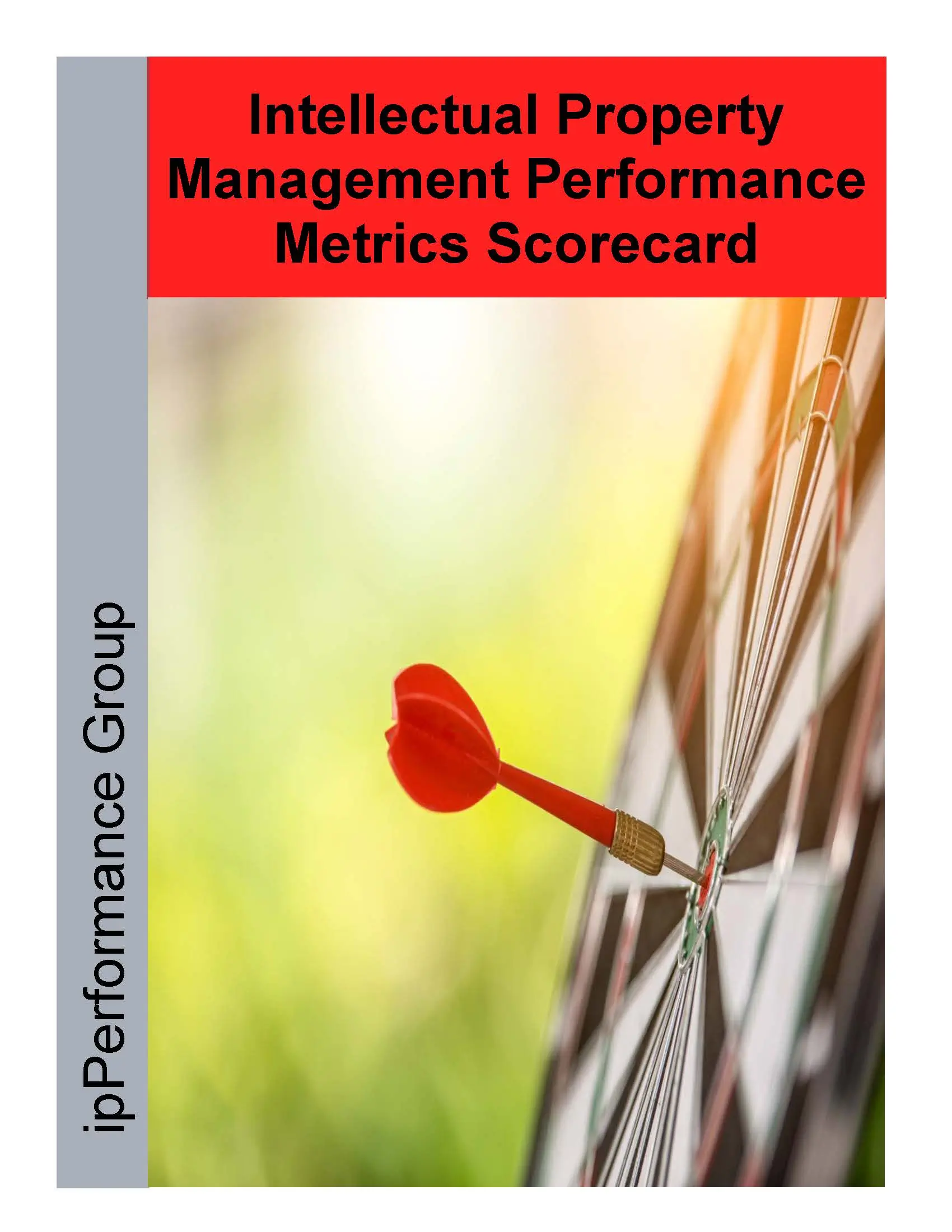
Intellectual Property Law Department – Best Practices Report
In this comprehensive Intellectual Property Law Department Report, innovation-driven companies shared operational costs, staffing and attorney responsibilities, patent filing strategies, improvement strategies, and performance metrics.
This Intellectual Property Law Department Report will assist you in evaluating your department’s costs and staffing levels. For example, this report details specific attorney and support staff sizes and performance metrics, attorney activities, cycle time and workload, patent filing strategies (including foreign filing decisions), and many other factors that impact a patent operation
View more – IP Law Department Best Practices Study Report.
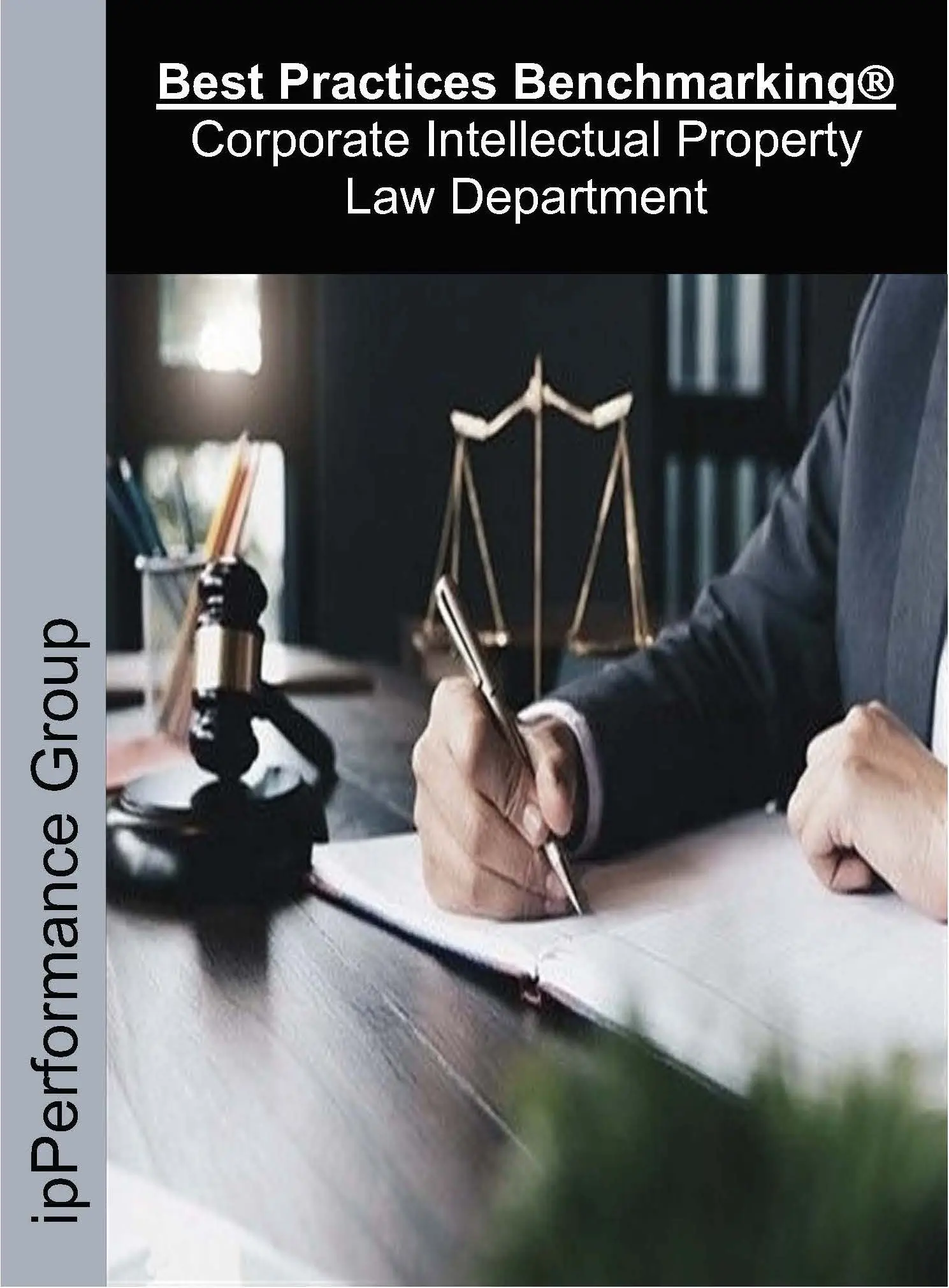
Inventor Rewards and Recognition Program Best Practices Report
The comprehensive Inventor Rewards and Recognition Program Best Practices Benchmark Report includes quantitative data from a survey of 49 innovation-driven companies across 24 major industries. In the report, corporate leaders share what does and does not work. This inventor rewards program information will show you how to create a winning incentive program and avoid the mistakes made by others
ipPerformance Group Research publishes the definitive guide to inventor incentives and remunerations in innovation-driven companies. This intellectual property benchmark of Inventor Rewards and Recognition Programs showcases financial and nonfinancial awards, program management and budgets, program performance and improvements, and remuneration practices and experiences in jurisdictions with laws covering inventor remuneration and rights.
View more – Inventor Rewards and Recognition Programs Report.
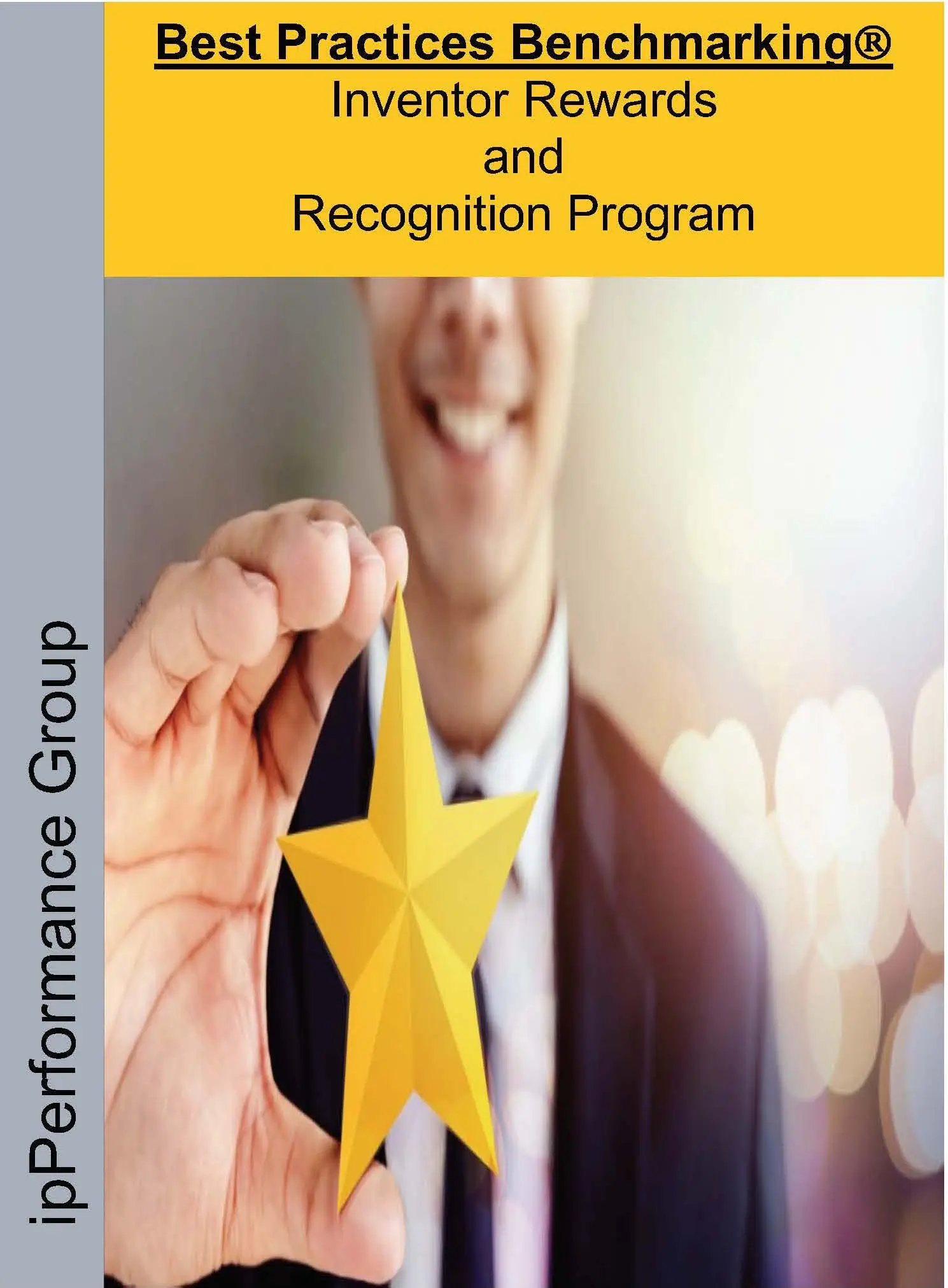
International Inventor Remuneration Management and Practices Report
The International Inventor Remuneration Management and Practices Report will tell you about inventor remuneration financial awards and incentive structures, inventor reward administration and management, and inventor award valuation approaches.
Thirty-two multinational innovation-driven companies’ IP leaders and research and development contacts who directly know their companies’ inventor remuneration practices participated in this intellectual property benchmark study. In addition to reporting on company practices, we analyzed fifty-eight practices to ascertain the best practices that lead to the pinnacle of performance. The results cover over seventeen facets of inventor rewards and recognition programs.
View more – International Inventor Remunerations Report

Invention Harvesting, Selection, and IP Protection Decision Practices
This comprehensive intellectual property benchmark of invention harvesting, selection, IP protection, and decision practices. It includes 29 innovation-driven companies that share effective invention harvesting methods, invention disclosure review and selection practices, use of prior art searches, IP protection decision factors, patent review committee responsibilities, patent portfolio pruning criteria, and performance metrics.
View more – Invention Harvesting, Selection, and IP Protection Decisions Practices Report
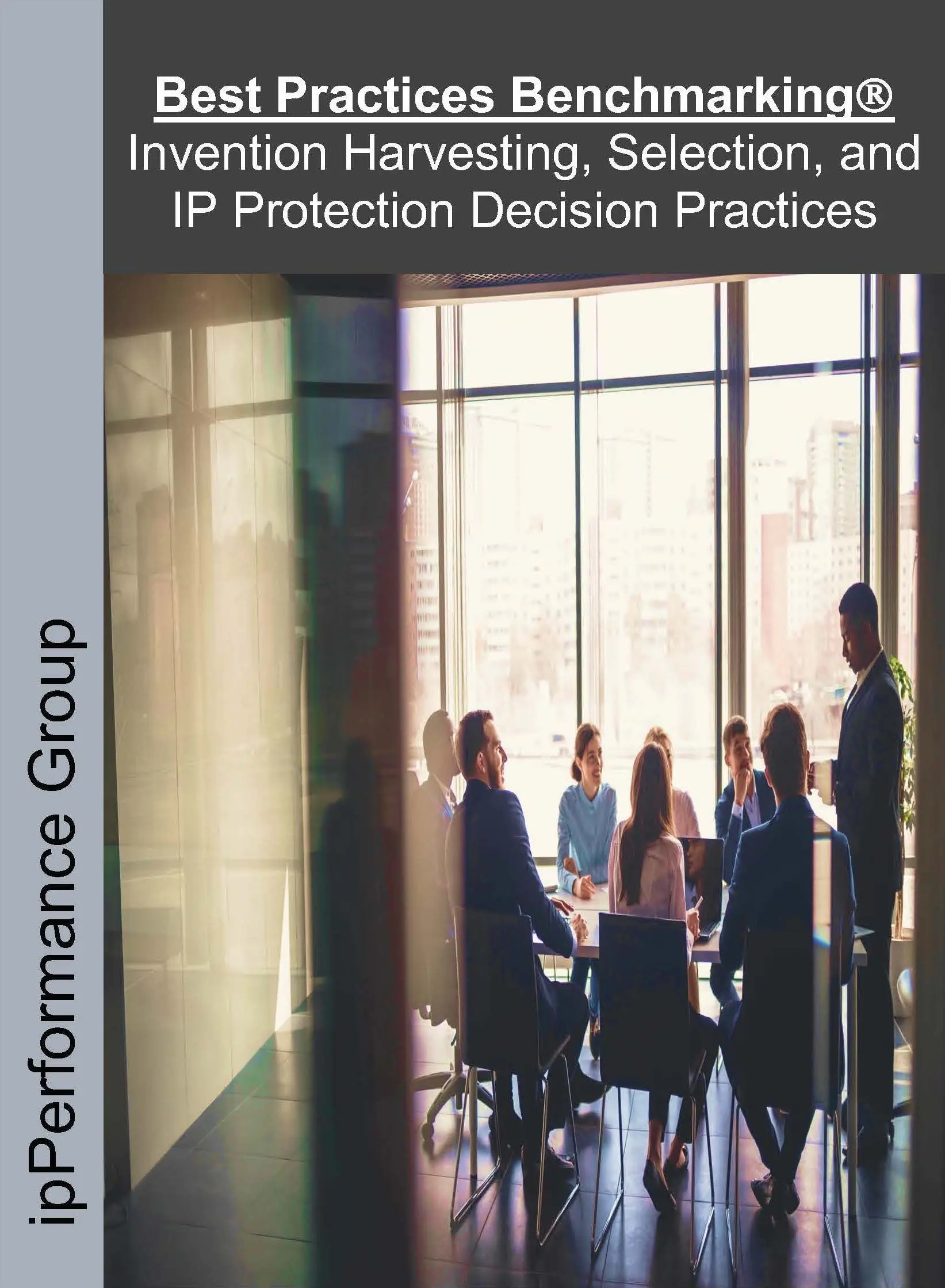
Trade Secret Management and Protection Practices Report
ipPerformance Group has gathered policies and best practices from 26 IP-driven companies. This is the most comprehensive intellectual property benchmark study analysis for trade secrets and proprietary information protection practices ever collected. Be confident using our guide as the definitive source of benchmarking and best practices data.
View more – Trade Secret Management Report.

Intellectual Property Law Department Budgeting Practices Benchmark Report
Our Intellectual Property Law Department Budgeting Practices Benchmark Study takes a comprehensive, global look at best practices for developing and managing the annual budget.
This intellectual property benchmark study, the Intellectual Property Law Department Budgeting Practices Report, will tell you how are intellectual property budgets are developed, who is responsible and who participates in the intellectual property operations budgeting process, how long it takes to develop an intellectual property law department budget, what intellectual property expenses and activities are identified and included in the budget, what methods are used to determine the intellectual property operations budget number, how are accurate are approved intellectual property operations budgets, what tools are used to develop an intellectual property budget, how often are intellectual property operations budgets reviewed, and what factors influence company intellectual property operations budget requirements.
View more – IP Law Department Budgeting Report.

Patent Preparation and Prosecution Quality Practices Benchmark Report
Generally, most IP leaders view building a valid and enforceable patent as the ultimate goal for seeking patent protection. The Patent Preparation and Prosecution Quality Practices Report findings revealed that companies have standardized practices for assessing the validity and quality of their patent applications. However, we did not observe universal approaches. We received contributions to this intellectual property benchmark study from companies representing a wide range of diverse industries.
View more – Patent Preparation and Prosecution Quality Report.
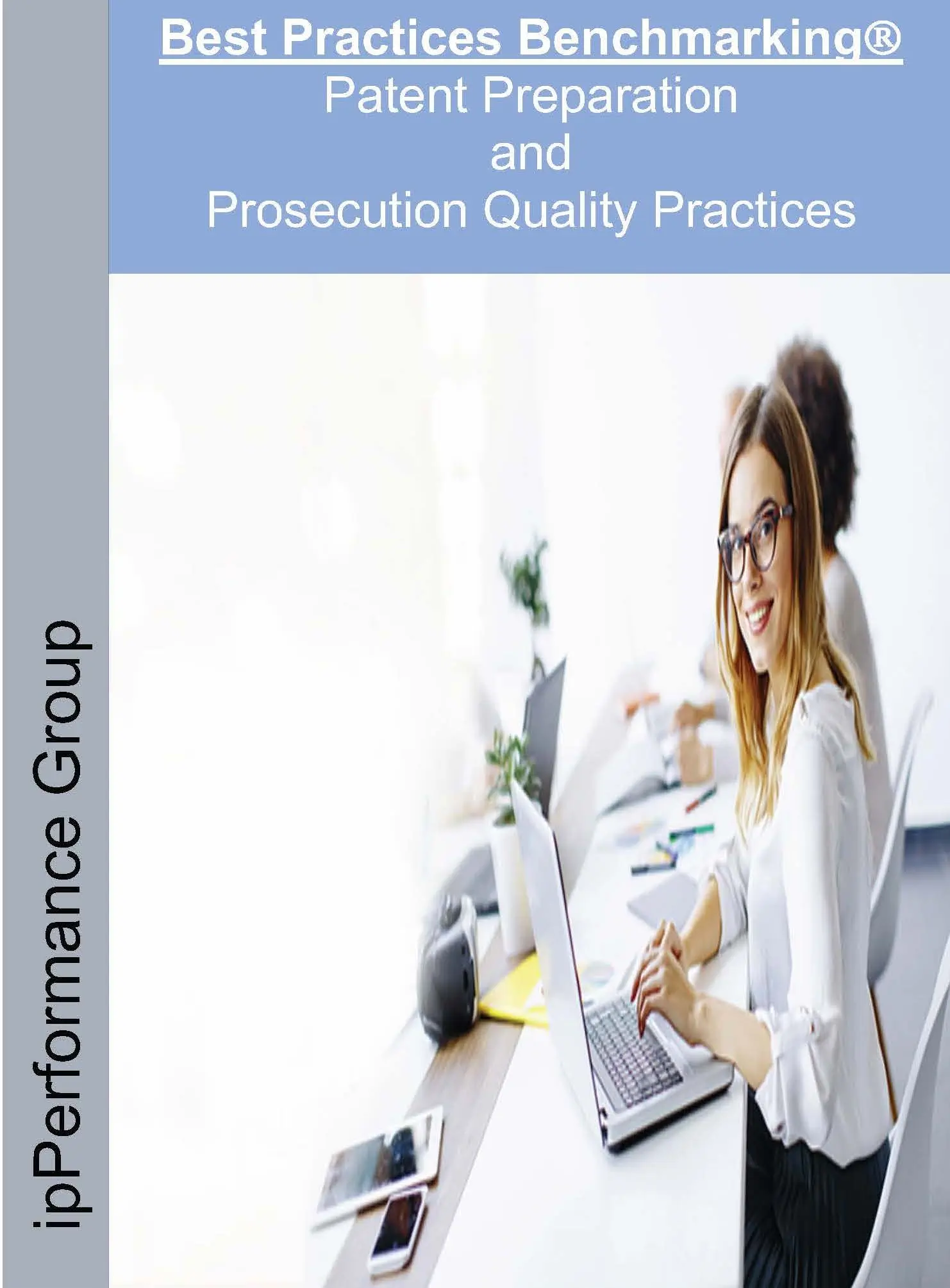
Patent Translation Practices Report
Patent translation is a critical concern for companies filing for patent protection in countries that don’t accept the language of their original application. This unique intellectual property benchmark provides average costs. The Patent Translation Practices Report will tell you about intellectual property law department practices to manage the cost and quality of patent translations.
View more -Patent Translation Report
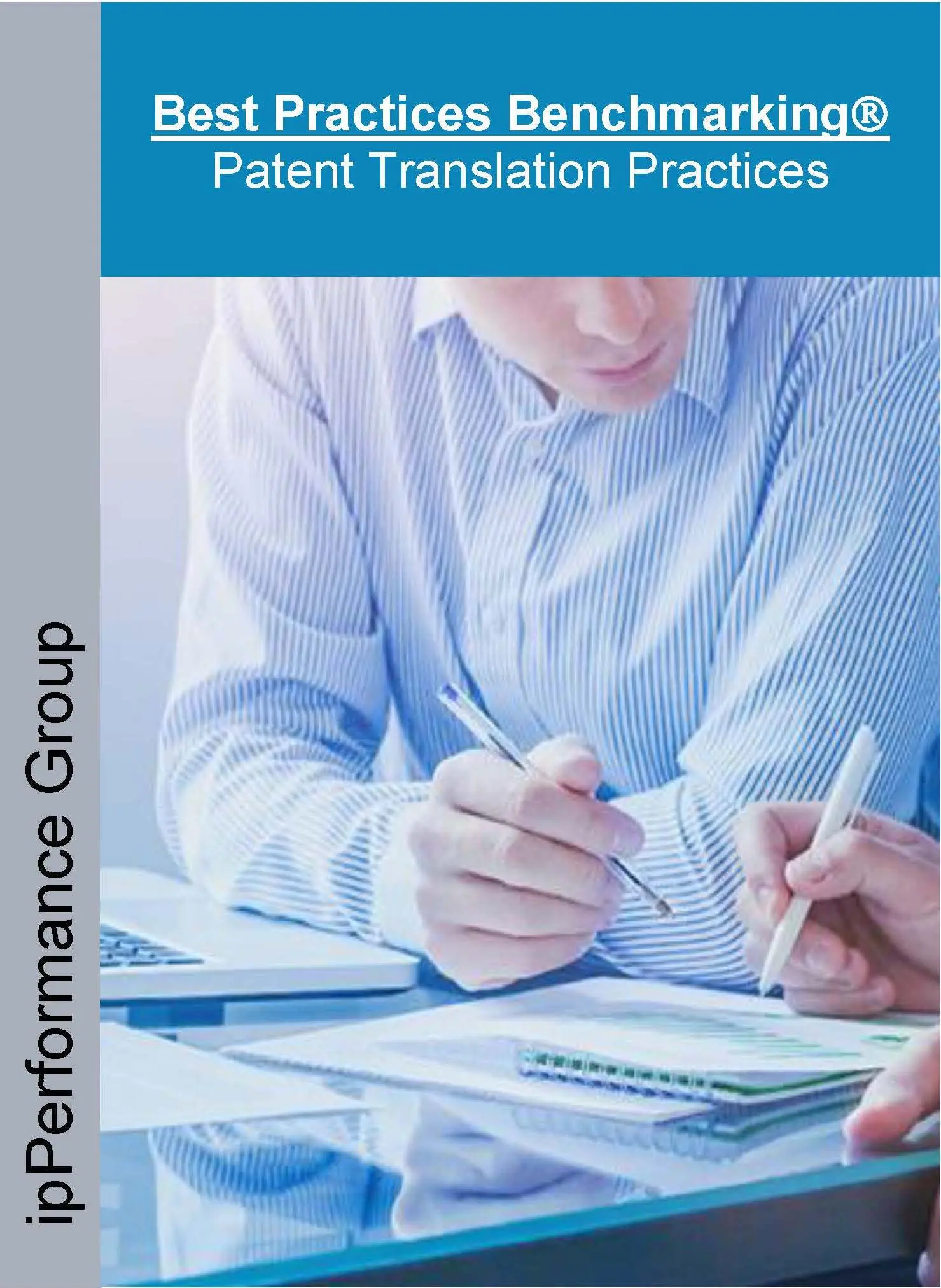
Intellectual Property Legal Process Outsourcing Report (IP-LPO)
Our Intellectual Property Legal Process Outsourcing Practices Benchmark Study took a comprehensive, global look at best practices for selecting and managing outsourced activities. We identified and investigated nine primary IP operations, which included sixty-one activities. In other words, identify the IP operations that were successfully outsourced and the best practices for managing relationships.
View more – IP-LPO

Foreign Patent Prosecution Practices Report
The Foreign Patent Prosecution Practices Report will tell you which methods are used to file foreign patent applications and why the IP department makes its decisions. This unique intellectual property benchmark survey was designed to explore the key considerations and identify the prevailing and best practices.
View more – Foreign Patent Prosecution Practices Report

Intellectual Property Law Department (Large Entities – based on a study conducted for Intellectual Property Owners Association)
ipPerformance Group conducted this Intellectual Property Law Department benchmark study on behalf of the Intellectual Property Owners Association (IPO) to identify the best practices for managing corporate patent practices. We surveyed seventy-four diverse companies representing over 27 industries, including chemicals, high technology, machinery (industrial/agricultural), pharmaceuticals and biotechnology, petroleum and energy, semiconductors, telecommunication services, medical devices, consumer goods, and automotive industries.
View more – IP Law Department Best Practices Study Report.

Intellectual Asset Management Software Satisfaction Report
The Intellectual Asset Management Software Satisfaction Report will tell you about company experiences with IAM software systems, including satisfaction with product functionality and vendor capabilities, strengths and limitations, system benefits, and integration with service providers and complementary internal software systems. Thirty-one companies participated in this intellectual property benchmark of Intellectual Asset Management Software Satisfaction. An IAM software satisfaction scorecard is included with this report.
View more – Intellectual Asset Management Software Satisfaction Report Overview.
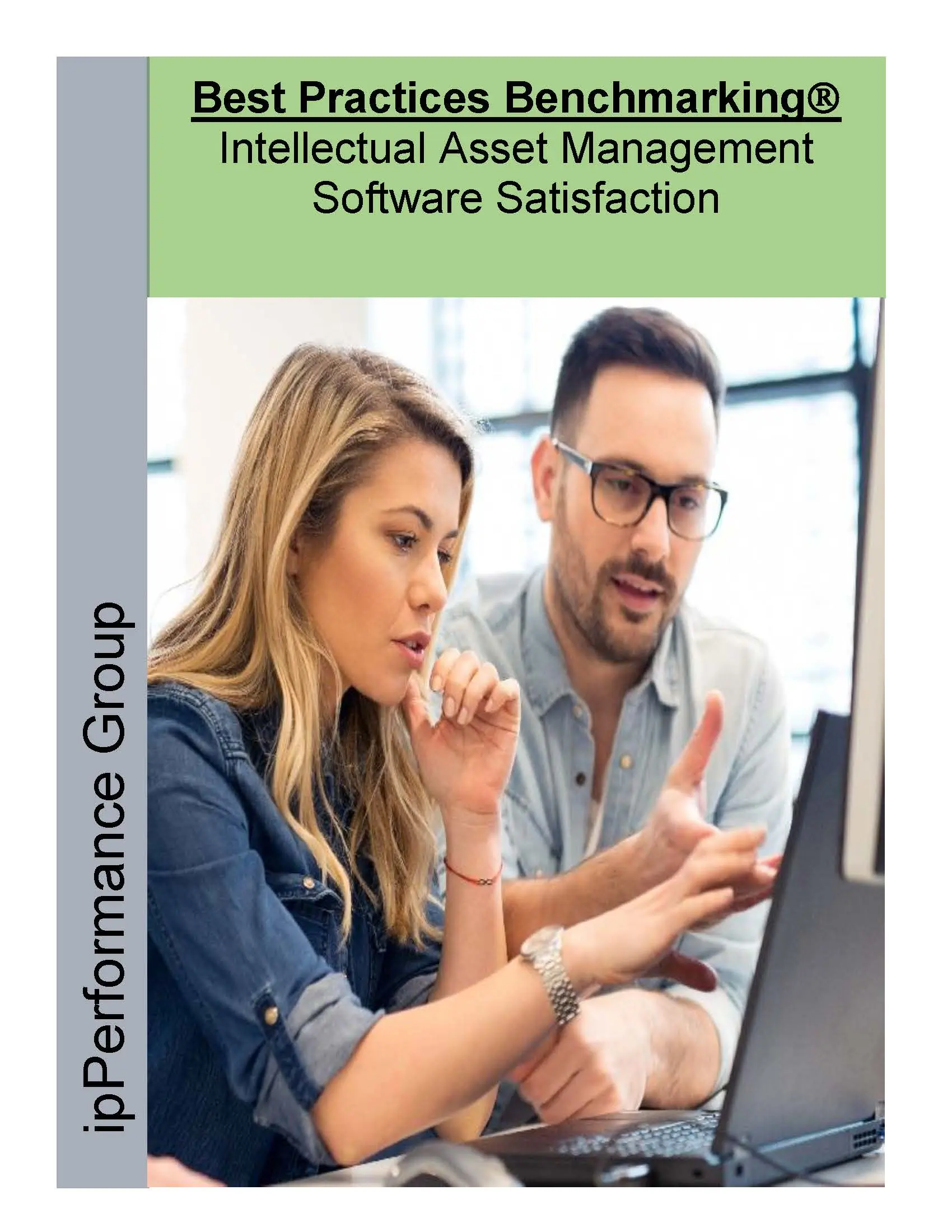
Intellectual Property Law Department: Outside Counsel Costs, Cycle-time, and Quality Management Report
Our Intellectual Property Law Department: Outside Counsel Costs, Cycle-time, and Quality Management Study takes a comprehensive and global look at best practices for effective management of law firms for patenting activities. This is the ninth year that ipPerformance Group has collected comprehensive data and information on Intellectual Property Law Departments.
The Intellectual Property Law Department: Outside Counsel Costs, Cycle-time, and Quality Management study confirms that law firm management varies widely across companies, but there are best practices for managing law firm relationships to achieve high-quality results, timely responses, and lower costs.
View more – Outside Counsel Costs, Cycle-Time, and Quality Management Report.
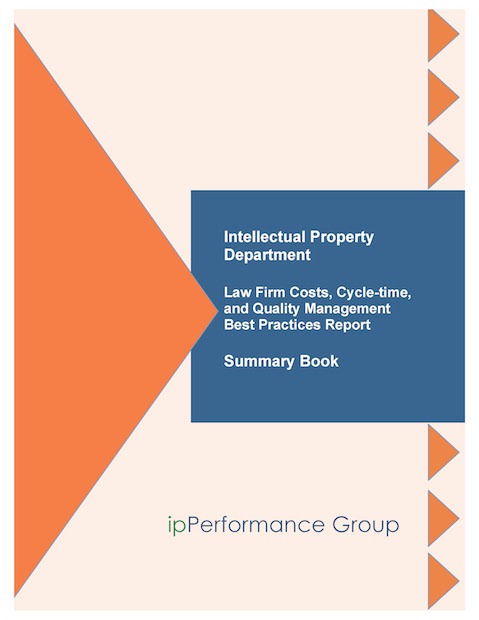
Intellectual Property Training Programs Best Practices Benchmark Report
This Intellectual Property Training Programs Best Practices Benchmark Report discusses the comprehensiveness of IP training programs, success measures, and which program characteristics impact achieving training goals most.
By revealing quantitative results from a survey of 31 corporations, the Intellectual Property Training Best Practices Benchmark Report will show you how to create a highly effective training program to strengthen employee knowledge and increase innovation activity.
View more – IP Training Program Report.
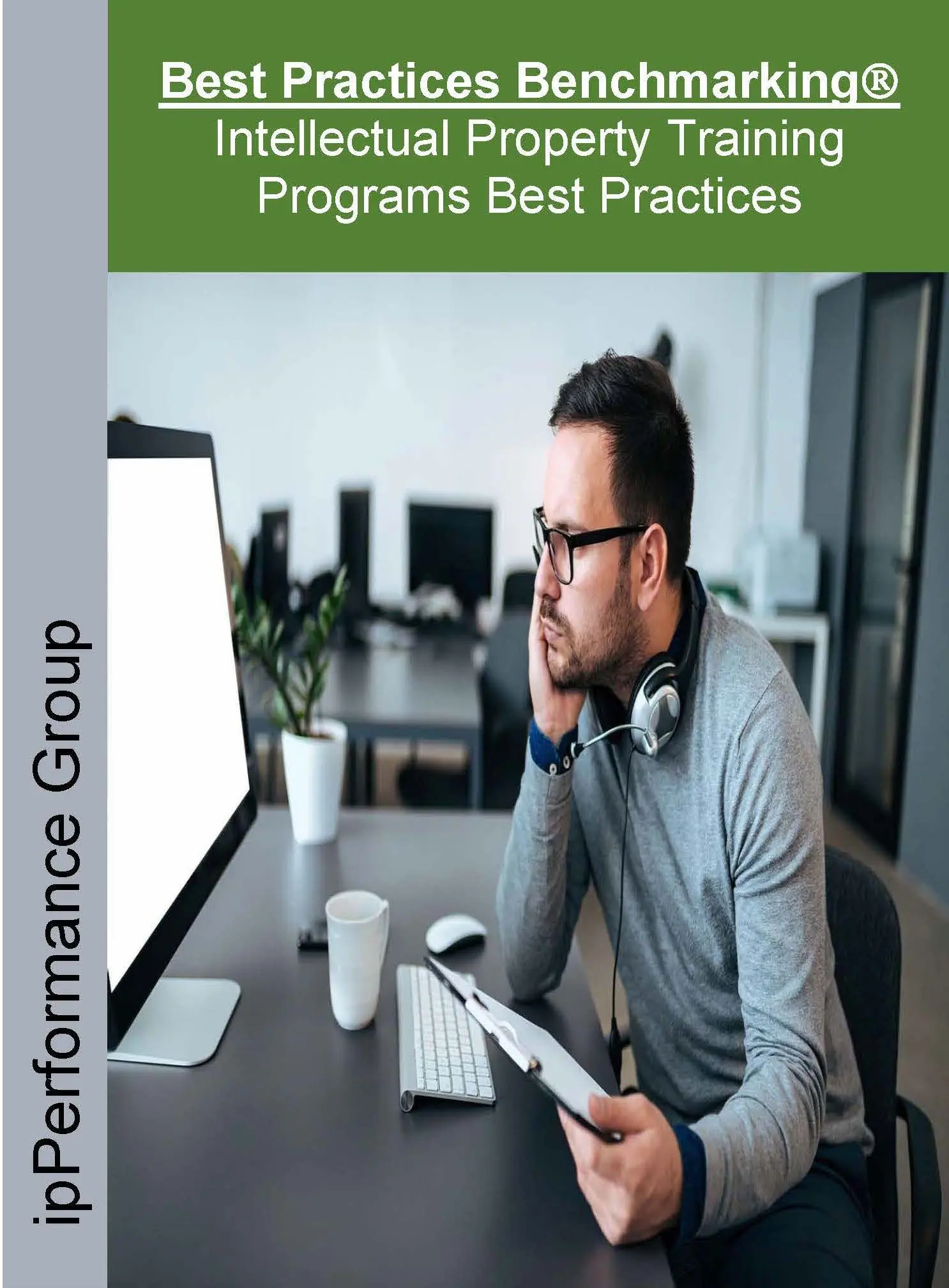
Patent Intelligence – Search and Analytics Best Practices Report
This Patent Intelligence Practices Report can help executives learn how leading organizations use patent data to drive strategy and market success. Furthermore, to determine how best-in-class companies proactively manage their patent intelligence functions to sustain efficiency and profitability.
View more – Patent Intelligence Best Practices Report.
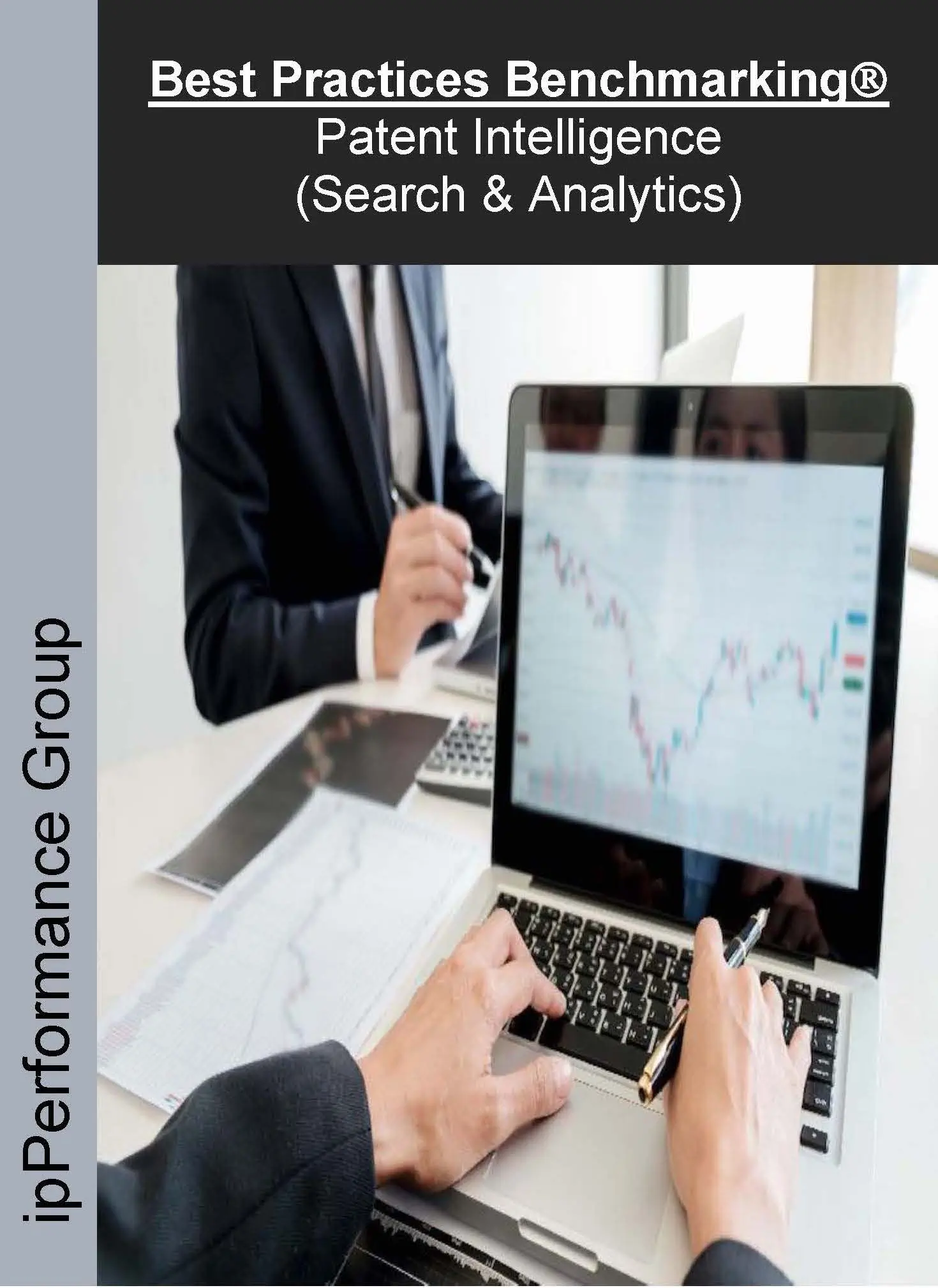
Developing Intellectual Property Strategies and Performance Metrics Best Practices Report
This Developing Intellectual Property Strategies and Performance Metrics Best Practices Report will assist you in evaluating how your company prepares intellectual property strategies. For example, this report details strategy structure and information sources, roles and responsibilities, key performance indicators, types of competitor information used, portfolio management decision criteria, and many other factors that impact intellectual property strategies.
View more – Developing IP Strategies and Performance Metrics Best Practices.

Handling Non-Practicing Entities Attacks Benchmark Report
Learning from experience. IP leaders and litigators provide candid feedback on handling attacks from Non-Practicing Entities (NPE).
Challenged by an uncertain future with the growth of Non-Practicing Entities (NPEs or Patent Trolls), companies across all industries are assessing their approach to handling NPE attacks and risk management. To mitigate the impact on the enterprise, company leaders must be able to respond effectively to current attacks and measure long-term risk, anticipate unforeseen threats, and adapt their patent strategies accordingly. This intellectual property benchmark report is designed to help learn which strategies and tactics are employed to combat NPEs and manage risk while identifying opportunities for long-term action.
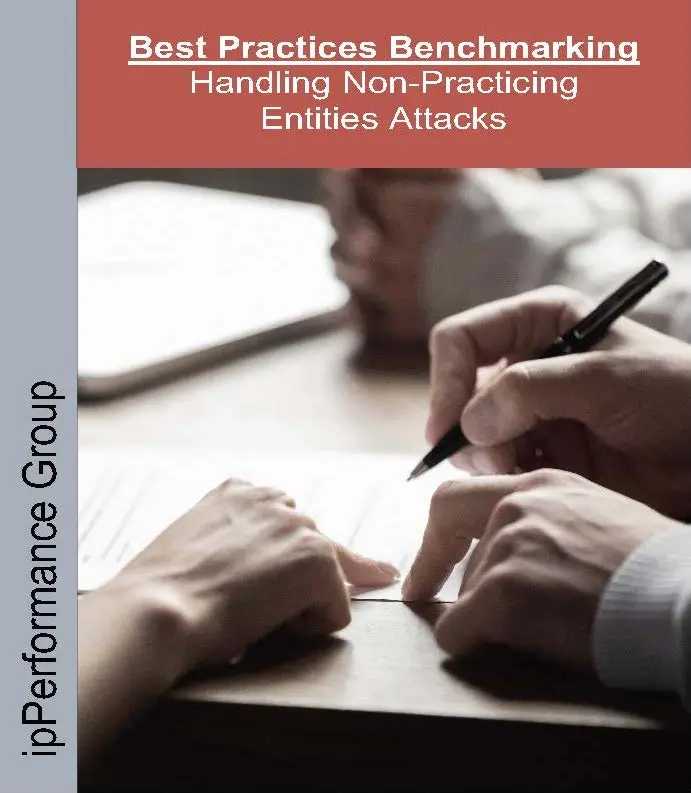
Learn how we provide intellectual property best practices that you can use to benchmark your practices.